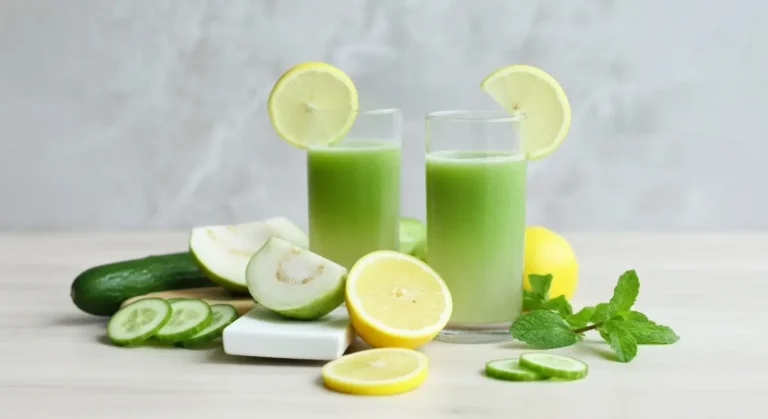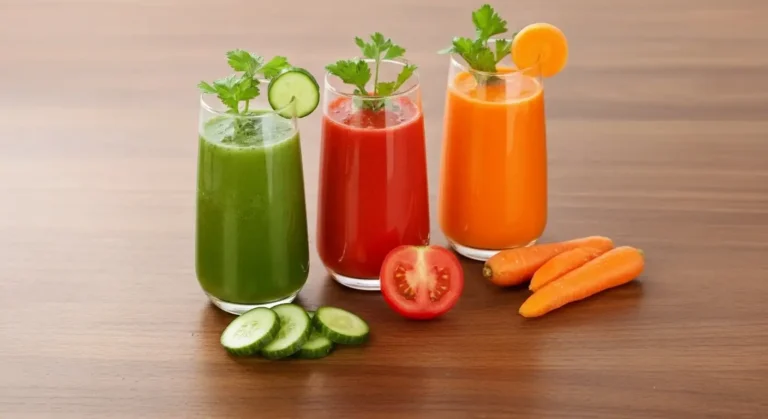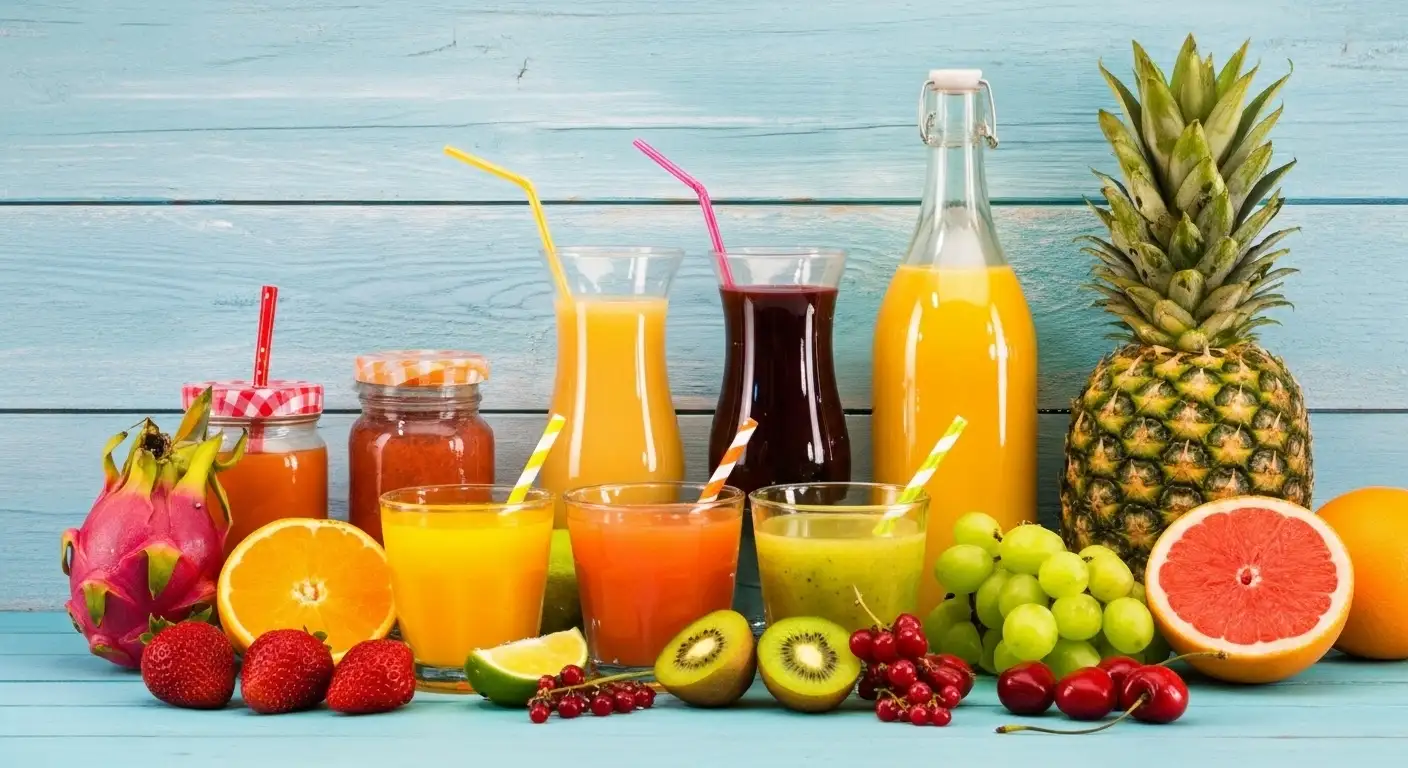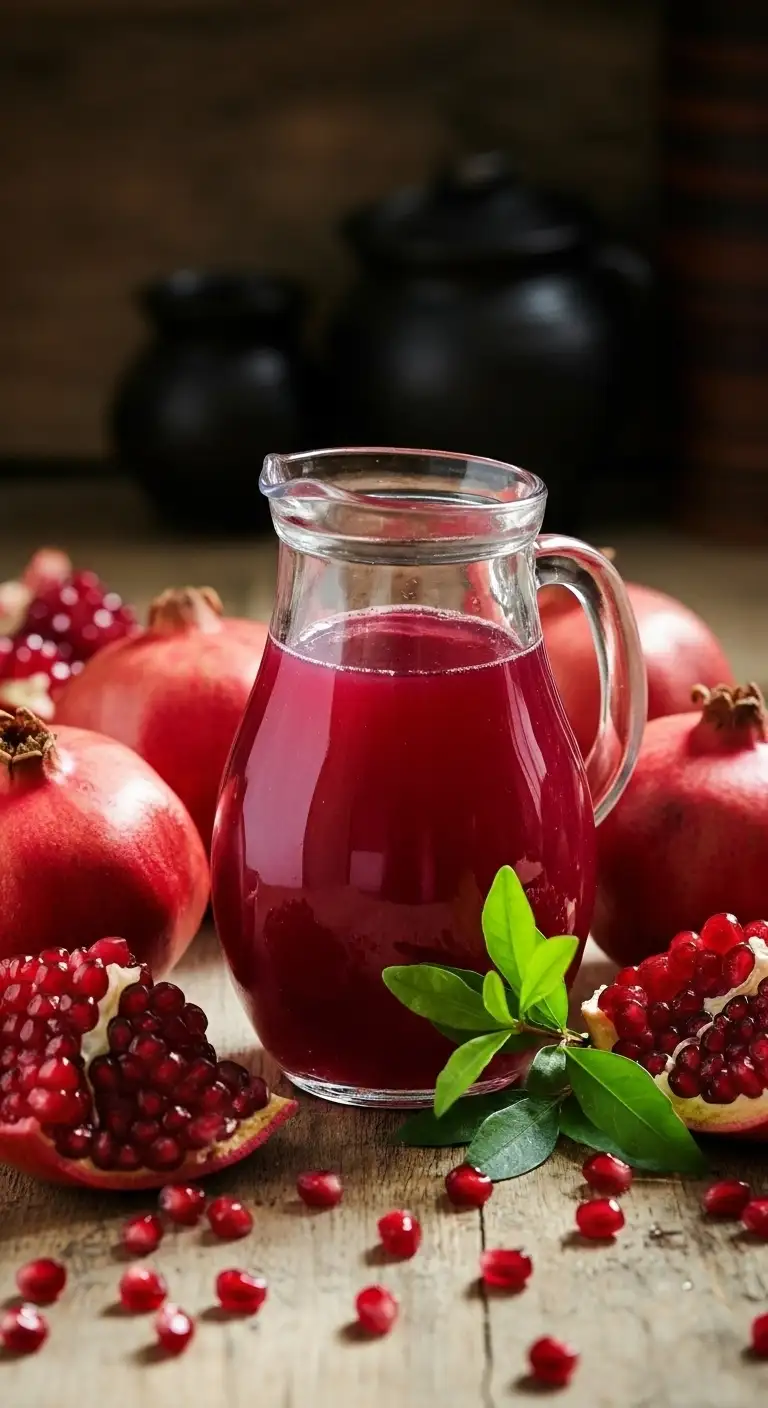Nước Ép Trái Cây (pronounced Noo-uk EHP Trai Cai) literally translates to “Fruit Juice” and is a cornerstone of Vietnam’s vibrant street food and beverage culture. Given the country’s fertile, tropical climate, fresh juice is an absolute must-try, offering incredible variety, potent nutrients, and an instant cool-down on a hot day.
The Basics of Nước Ép Trái Cây
What is it?
Nước Ép Trái Cây refers to freshly pressed, blended, or extracted juices made from the immense variety of local, seasonal Vietnamese fruits and vegetables.
The Experience:
Unlike pre-packaged juices, street-side Nước Ép is made-to-order, ensuring maximum freshness and nutrients. The process is often theatrical, with vendors chopping fruit and feeding it into a juicer right in front of you.
Core Ingredients:
The foundation is the fresh fruit, which is often enhanced with a small amount of sugar syrup (optional) and, crucially, a generous amount of ice to combat the tropical heat.
Sometimes, a squeeze of lime or kumquat is added to balance out the sweetness, particularly in Northern varieties.

Types of Nước Ép Trái Cây
The range of juices is dictated by the season and the region, but here are some of the most popular and essential varieties:
| Vietnamese Name | English Name | Flavor Profile | Essential for Juicing |
|---|---|---|---|
| Nước Cam | Orange Juice | Sweet, slightly acidic, and refreshing. | A standard fresh-pressed juice. |
| Nước Ổi | Guava Juice | Thick, creamy, and subtly sweet. | Often strained to remove seeds; known for its high Vitamin C. |
| Nước Dứa (or Nước Thơm in the South) | Pineapple Juice | Sweet and tart, often with a hint of foam. | Great on its own or mixed with other juices. |
| Nước Ép Cà Rốt | Carrot Juice | Sweet and earthy. | Often mixed with pineapple or apple for better flavor. |
| Nước Ép Chanh Dây | Passion Fruit Juice | Intensely tangy, sweet, and fragrant. | Served with the tiny black seeds floating, stirred well before drinking. |
| Nước Mía | Sugarcane Juice | Sweet, grassy, and incredibly hydrating. | Though technically not fruit juice, it is the most popular street-side "juice" and is often flavored with kumquat (tắc). |
| Nước Dừa | Fresh Coconut Water | Naturally sweet and electrolyte-rich. | Served straight from the young coconut. |
Related Drink: Sinh Tố (Smoothie) While Nước Ép is pressed juice, Sinh Tố is the Vietnamese term for a smoothie, where fresh fruit is blended with ice, condensed milk, or yogurt to create a thicker, creamier treat. Popular Sinh Tố include: Sinh Tố Bơ (Avocado Smoothie), Sinh Tố Mãng Cầu (Soursop Smoothie), and Sinh Tố Xoài (Mango Smoothie).
How to Drink Nước Ép Trái Cây
Always Iced: Virtually all Nước Ép is served ice-cold, usually with a large volume of ice cubes in a glass or a plastic takeout cup.
Made to Order: When ordering from a street vendor, watch them prepare it—it guarantees freshness. You can often specify your desired sweetness level (e.g., “Ít đường” – less sugar, or “Không đường” – no sugar).
Salt and Spice Pairing (The Southern Way): While the juice itself is sweet, Vietnamese people often pair it with a small dish of muối ớt (chili salt or a mixture of salt and chili powder). This is typically for eating the leftover fruit pulp or dipping fresh fruit slices, but the occasional sip of juice followed by the savory salt creates a unique sweet-and-spicy contrast.

Regional Differences in Nước Ép Trái Cây
While fresh juice is universal across Vietnam, regional distinctions are visible in the choice of fruit and how it is served.
| Region | Key Characteristics & Flavor Preferences | Signature Regional Juices/Drinks |
|---|---|---|
| North (Hanoi) | More Focus on Purity and Tartness. Northern cuisine favors more subtle flavors. Juices often use a squeeze of lime or kumquat to add a zesty, tart balance, particularly with Nước Mía. | Nước Sấu (Dracontomelon Juice - a seasonal tart specialty), Nước Mía (Sugarcane juice often with lime/kumquat), Nước Ép Ổi (Guava). |
| Central (Hue / Da Nang) | Spicy and Balanced. The central region, known for its spicier cuisine, often incorporates a slightly more robust or earthy flavor profile, though this is more evident in savory dishes than in simple juices. They embrace a mix of Northern and Southern fruits. | Nước Ép Thanh Long (Dragon Fruit Juice), often made from fruits grown in nearby areas. |
| South (Ho Chi Minh City / Mekong Delta) | Sweeter, Creamier, and Tropical. The fertile Mekong Delta provides a massive supply of tropical fruits, leading to sweeter juices and a heavier use of condensed milk in Sinh Tố (smoothies). | Sinh Tố Bơ (Avocado Smoothie, often sweetened with condensed milk), Nước Mía Sầu Riêng (Sugarcane with Durian - a bold Southern mix), Nước Ép Xoài (Mango Juice). |
| Note on Vocabulary: The most common regional difference is the word for Pineapple: the North uses Dứa, while the South uses Thơm. |




